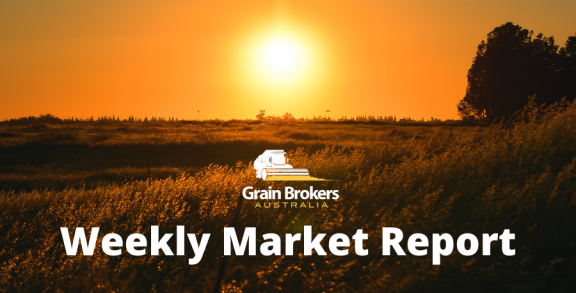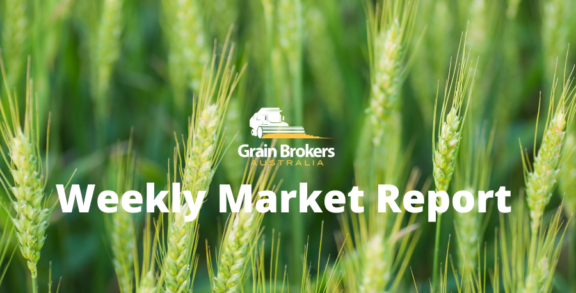
The gloss has been wiped off 2023/24 European Union crop production over the last month after much drier than average growing conditions depleted soil moisture reserves across large parts of western, central and northern Europe, as well as the eastern regions of Romania over the last twelve weeks. The negative yield impact has been amplified in many regions by distinctly warmer than usual temperatures through most of June and July.
Now rainy conditions are forecast for much of Northern EU, creating challenging harvest conditions and raising winter crop quality concerns. After a dry summer, the rains are coming at the worst possible time, with the primary benefit being replenished soil moisture reserves ahead of the autumn planting campaign.
The European Commission’s (EC) latest production estimates were released late last week, and it has pegged total cereal production for the EU-27 (which excludes the United Kingdom) at 276.02 million metric tonne. This was off a planted area of 50.63 million hectares for an average yield across soft wheat, corn, barley, triticale, oats, rye, durum wheat and sorghum of 5.45 metric tonne per hectare. This is down across the board month-on-month and compares to last season’s area, yield and total production numbers of 51.05Mha, 5.24MT/ha and 267.68MMT, respectively.
Last week’s 2023/24 output update pegged soft wheat production at 127.43MMT off 21.92Mha for an average yield of 5.81MT/ha. This compares to 126.74MMT off 21.9Mha and an average yield of 5.79MT/ha last year. This season’s EU-27 barley yield is now expected to be 4.74MT/ha, down 6 per cent from 5.03MT/ha in 2022. The planted area is relatively unchanged year-on-year at 10.36Mha, but production is estimated to be 5.7 per cent lower than last year’s harvest at 49.14MMT.
Corn is the second biggest cereal grain produced in the EU each season, and output from this year’s harvest is expected to be 21 per cent higher year-on-year at 63.24MMT but 13.9 per cent lower than the previous season’s output of 73.48MMT. This year’s planted area presently sits 4.5 per cent lower than last season at 8.45Mha, but the projected yield is the big mover, increasing 26.7 per cent from 5.91MT/ha in 2022 to 7.48MT/ha this season.
EU oilseed production is projected at 32.98MMT, 5.6 per cent higher than the 2022 harvest, which binned 31.23MMT. It is also 9.26 per cent higher than the 2021 harvest of 30.19MMT and 10.5 per cent higher than the five-year average of 29.84MMT. Rapeseed, or canola, is the biggest oilseed crop grown in the EU, with projected production currently sitting at 19.44MMT, 58.9 per cent of the total EU oilseed crop.
France is the EU’s biggest grain producer and exporter, with total cereal production in 2023/24 expected to be 63.79MMT off 8.85Mha for an average yield of 7.2MT/ha across all commodities. Production is up 5.5 per cent year-on-year from 60.3MMT, off a slightly higher planted area of 8.96Mha.
French farm agency France AgriMer advised late last week that crop conditions were stable to slightly worse in the week to July 24, as the winter harvest continues to lag last season’s pace by an average of three days, but still two days ahead of the five-year average. Late frosts in April in the eastern regions and a total lack of rain from mid-May to mid-June strongly reduced the production potential in the northern two-thirds of the country.
The EC is currently expecting French soft wheat production to be 35.48MMT, up 5.1 per cent from 33.67MMT last harvest, off a slightly increased area of 4.77Mha. As of late last week, 78 per cent of the French soft wheat crop was rated good to very good, down from 80 per cent a week earlier but much higher than the 63 per cent rating at the same time last year. The wheat harvest advanced by 24 percentage points week-on-week to 83 per cent complete as of July 24, well behind last year’s pace of 94 per cent but still ahead of the five-year average of 75 per cent.
With the winter barley harvest now complete, the final FranceAgriMer rating was 80 per cent good to very good, significantly higher than the 62 per cent rating for the same category a year earlier. The Spring barley conditions were stable at 73 per cent good to very good, compared with the 48 per cent recorded in the same week in 2022. The hot, dry summer has accelerated spring barley harvest activities significantly, advancing 22 percentage points across the week to July 24 to be 91 per cent complete compared to the five-year average of 65 per cent.
This season’s French rapeseed production is currently forecast at 4.63MMT, up 2.6 per cent from 4.51MMT in 2022 and the highest since 2018. The estimate is based on an expected yield of 3.44MT/ha, down from 3.68MT/ha last year, and an estimated planted area of 1.35Mha, up from 1.23Mha in 2022.
The dry spring and summer and warmer than average temperature over the last eight weeks has also stressed crops through most of Germany, the EU’s second biggest grain producer, leading to a 3.2 per cent reduction in the total cereal output forecast to 42.16MMT. The soft wheat crop accounts for over 51 per cent of that estimate at 21.64MMT, itself down 3.4 per cent compared to last year. The planted area of 2.88Mha is down 2.3 per cent compared to the 2022 harvest, and the forecast yield is 1.1 per cent lower at 7.53MT/ha.
German barley production is projected to be down 4.2 per cent to 10.75MMT this season, primarily due to a sharp reduction in the average yield from 7.08MT/ha to 6.71MT/ha. The planted area actually rose slightly year-on-year to 1.6Mha. The nation’s rapeseed crop has suffered badly under the unseasonal conditions, with the projected yield down 9.3 per cent year-on-year to 3.61MT/ha. And despite a sharp increase in the planted area to 1.17Mha, the harvest is still expected to be lower than in 2022 at 4.21MMT.
While the EU’s grain export facilities will be kept busy shipping the increased output from its member states this season, the EU’s agriculture commissioner Janusz Wojciechowski stated last week that it is ready to export almost all of Ukraine’s agriculture goods via “solidarity lanes”, following Russia’s withdrawal from the UN-backed Black Sea grain corridor. Wojciechowski said 60 per cent of Ukraine’s exports were shipped via solidarity lanes while the UN-backed grain deal was in operation, and 40 per cent went via the Black Sea.
The commissioner added that the EU was looking at several initiatives from member states to develop a joint plan to cover the additional transport costs for exporting Ukraine’s agricultural goods. While expanding grain transit through the EU is sensitive for Ukraine’s neighbours, where local farmers have come under financial pressure from increased Ukrainian imports, the commission felt confident a solution could be found that addresses the concerns of its members and keeps Ukraine’s surplus grain moving into the international market.
Call your local Grain Brokers Australia representative on 1300 946 544 to discuss your grain marketing needs.





